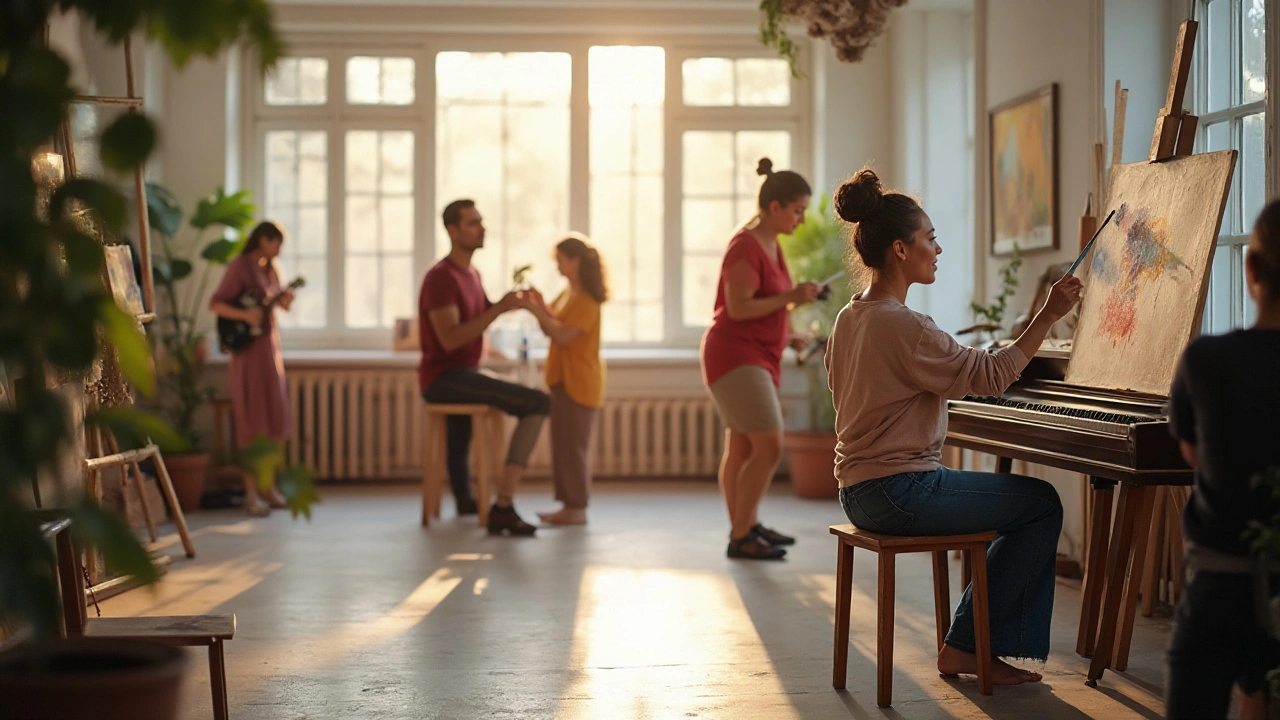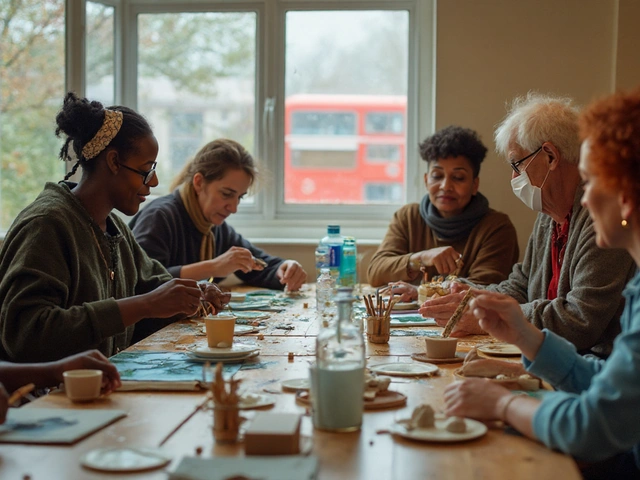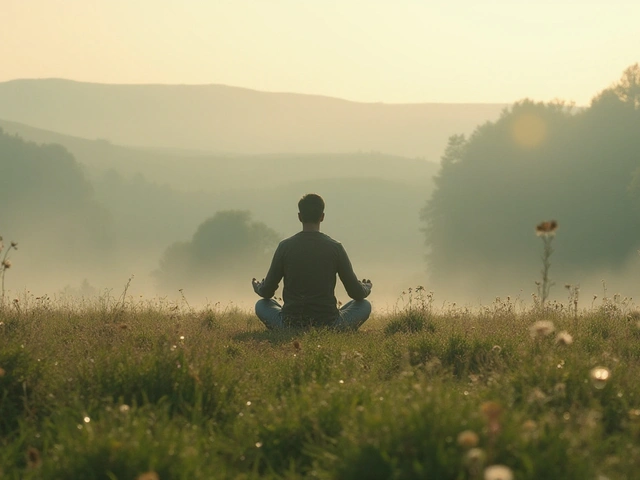Creative arts therapies open up a world of expression beyond words. In a realm where our innermost feelings often remain trapped, these therapies offer a gentle pathway to understanding and healing. By drawing on artistic practices such as painting, music, drama, and dance, individuals are given a means to explore emotions and communicate in ways that traditional talk therapies might not capture.
Whether it's the soothing rhythm of a drum circle or the gentle strokes of a paintbrush, these expressive therapies enable people to articulate complex emotions, paving avenues for insight and recovery. In an increasingly busy world, creative arts therapies provide a unique antidote—helping individuals reconnect with an innate sense of creativity and self-awareness.
- What are Creative Arts Therapies?
- The Different Forms of Creative Arts Therapies
- Benefits of Creative Arts Therapies
- How to Engage with Creative Arts Therapies
- Future Prospects in Creative Arts Therapies
What are Creative Arts Therapies?
In a dynamic fusion of artistry and healing, creative arts therapies emerge as a compelling form of treatment, one that engages more than just verbal expression. Rooted in the belief that art-making itself can be a vehicle for therapeutic change, this approach transcends the traditional boundaries of therapy by incorporating various artistic modalities. Whether it is through the sweeping movements of dance, the evocative power of music, the rich tapestry of drama, or the vivid pallet of visual arts, each form serves as a conduit for deeper self-exploration and expression. These therapies are designed to facilitate personal growth and emotional healing, especially in those who might find verbal communication a challenge. Many who embark on this journey find a way to externalize their internal world, gaining clarity and insight into their experiences.
"Art speaks where words are unable to explain." - Anonymous
The integration of creative processes within therapeutic settings has been shown to aid in mental wellness by bypassing heavily defended psychological walls. Creative arts therapies stand on a multidisciplinary pedestal where therapists trained in both artistic and psychological expertise guide participants towards self-discovery. The key lies in the dual focus on creativity and therapy, which together help clients unlock entrenched emotions, manage behavioral issues, and cope with stress more effectively. These therapies are suitable for individuals of all ages, ranging from children grappling with developmental challenges to adults navigating life's turbulent waters. The personalized nature of the therapy allows it to adapt to the unique needs of each person, ensuring a versatile approach to mental health care.
Modern studies on the efficacy of creative arts therapy underscore its potential. Research has documented positive outcomes among participants, citing improvements in emotional regulation, social skills, and cognitive functioning. Therapeutic techniques often involve creative outputs, such as drawing or sound, which enable individuals to articulate unspeakable feelings. These activities foster a deeper understanding of one's emotions and can ultimately lead to profound personal insights. Importantly, the process emphasizes the value of creation rather than the final product, allowing individuals to express themselves freely without judgment. For those who might shy away from conventional therapeutic practices, creative arts therapies offer an inviting alternative, one that celebrates individuality and expression.
For those considering stepping into the world of healing arts, it may be reassuring to know that historical roots stretch deep into time. Ancient cultures recognized the power of art as both a reflective and restorative practice. The echo of drumbeats in tribal healing or the visual storytelling of cave paintings reveal an understanding of art's capacity to heal long before it was formalized in the modern sense. Today's creative arts therapists still draw inspiration from these traditions, understanding that the human need for expression through art is as old as humanity itself. This ancient wisdom, coupled with contemporary therapeutic insights, makes creative arts therapies a rich and rewarding path in the pursuit of mental wellbeing.
The Different Forms of Creative Arts Therapies
Creative arts therapies encompass a wide spectrum of approaches, each tapping into various artistic mediums to facilitate healing and expression. Among the most recognized forms is art therapy, which allows individuals to explore their emotions and intangible thoughts through visual creation. Whether it’s painting, sculpting, or drawing, art therapy provides a non-verbal outlet for deep-seated emotions. Some find comfort in the tactile process of molding clay, which can be a grounding activity amidst emotional turbulence. The visual aspect of creating art can serve as a reflective mirror, offering insights into the creator’s mental and emotional state—one that words alone may fail to capture.
On a different note, music therapy harnesses the profound impact of sound and rhythm on the human psyche. It’s not just about playing instruments or singing; music therapy can include listening to music, songwriting, or even engaging in improvisational sound exercises. Music has the unique ability to evoke memories and emotions, making it a powerful tool for personal reflection and change. Research has shown that music therapy can significantly alleviate symptoms in individuals with depression and anxiety, providing a rhythmical scaffold for emotional expression and cognitive restructuring. It's fascinating how a simple melody can transcend words and reach into the depths of our being.
Another dynamic form is drama therapy, which employs the performative aspects of theater to encourage exploration and healing. This form takes the concepts of role-play and storytelling to new heights, allowing participants to reconstruct and re-examine their personal narratives. By stepping into different characters, individuals can gain fresh perspectives on their situations, helping them to process unresolved issues or traumas. The act of performing can be both liberating and insightful. According to Dr. Elinor Fuchs, "theater reflects the truth of our lives, where each actor's portrayal opens a window to the soul's hidden desires and fears."
Then there’s dance therapy, or dance/movement therapy, which centers around the idea that movement can articulate emotions that are perhaps too overwhelming to verbalize. This form of therapy gives individuals the opportunity to express their feelings physically, releasing what they often can't say in words. Movement can empower, heal, and invigorate the spirit, making it a versatile therapeutic tool. In group settings, dance therapy also encourages social interaction and connectivity, fostering a sense of community and belonging. Studies have indicated that engaging in dance therapy can improve physical well-being as much as emotional health, enhancing not only mood but also physical balance and strength.
Each form of creative arts therapy holds unique benefits, depending on the individual's preferences and needs. Whether one finds solace in the quiet rhythm of an art brush or the energetic movements of dance, these therapies provide a customized pathway to healing. Embracing the power of creativity, these therapies remind us that healing is an art form itself, one that thrives on the fluid interchange between emotion and expression, body and mind.
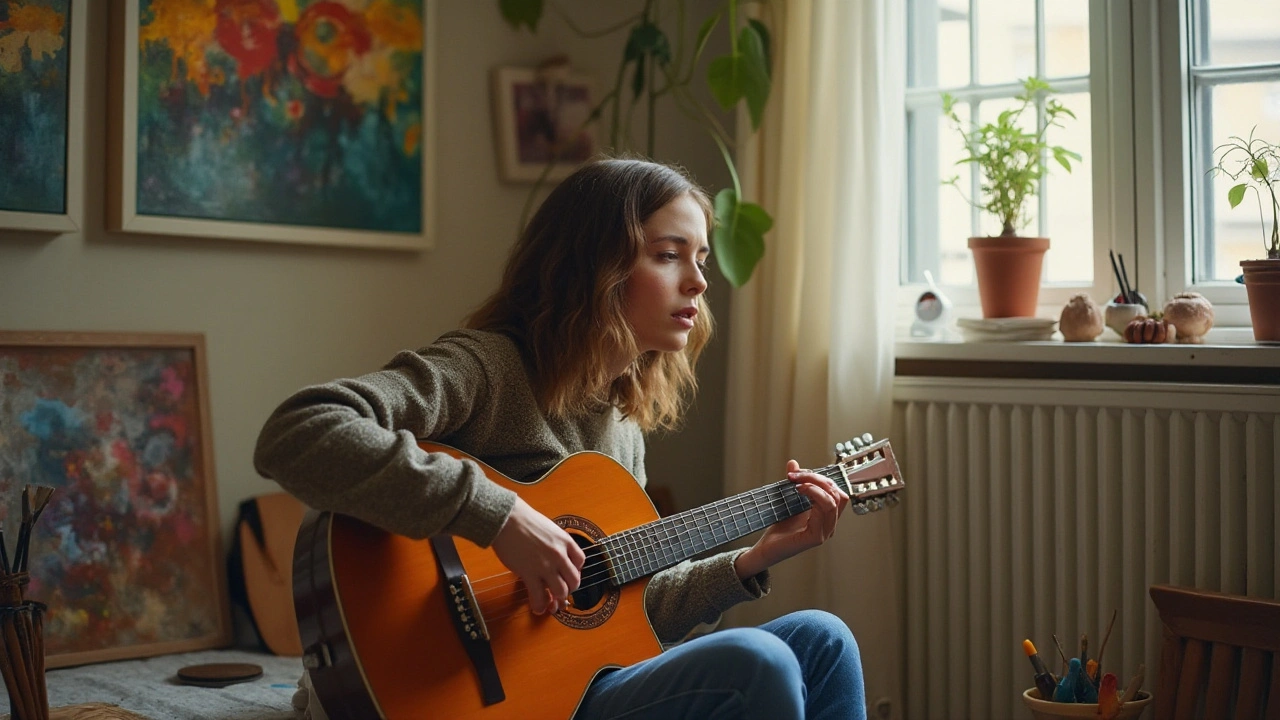
Benefits of Creative Arts Therapies
The world of creative arts therapy is vast and varied, offering numerous benefits that span emotional, psychological, and even physical well-being. People often find traditional forms of therapy daunting, but the artistic approach provides a non-threatening way to explore deep-seated emotions. Through engagement with creative activities, individuals can unlock subconscious thoughts that might otherwise remain hidden. Such therapies can act as a magnet, attracting those who find solace and strength in creativity, allowing them to transcend verbal expression.
One compelling advantage is the improvement in emotional resilience and self-esteem. When participating in activities like painting, music, or dance, individuals can experience moments of profound self-discovery and mastery. The satisfaction of creating something tangible allows people to see growth and achievement, which directly uplifts their sense of self-worth. In this therapeutic arena, art becomes a mirror reflecting one's inner landscape, providing insights that promote healing and transformation.
Therapeutic techniques like music and art therapy have clinically demonstrated reductions in stress levels and improvements in mood. Engaging in painting or listening to specific types of music can activate neural pathways that encourage relaxation and stress relief. For example, studies have shown that art therapy can lead to a significant reduction in cortisol levels, a biological marker of stress. These expressive practices encourage mindfulness, drawing focus away from anxiety-ridden thoughts and grounding individuals in the present moment.
Physical Benefits
Beyond mental health, there are physical health benefits associated with creative arts therapies. Dance therapy, for instance, combines physical movement with emotional expression, which not only boosts physical fitness but also enhances coordination and motor skills. This kind of therapy can be particularly beneficial for individuals recovering from severe medical conditions or surgeries, aiding in quicker recovery through gentle physical activity. Additionally, the rhythmic nature of music therapy has a profound impact on the body's physiological state, often leading to regulated breathing and heart rate.
"Art enables us to find ourselves and lose ourselves at the same time," wrote Thomas Merton, highlighting the dual role of artwork in guiding personal exploration while offering freedom from life's pressures.
For those battling trauma or difficult life transitions, healing arts provide a safe space to process experiences non-verbally. Artistic endeavors allow them to reclaim a sense of control over their narratives, often leading to emotional breakthroughs that might be unattainable through conventional therapy alone. A crucial element lies in the creative process itself, which empowers individuals to confront fears and express joys without judgment. This empowerment extends beyond the therapy sessions, equipping individuals with coping strategies to manage everyday challenges.
| Type of Therapy | Key Outcome |
|---|---|
| Music Therapy | Reduces anxiety |
| Art Therapy | Improves self-awareness |
| Dance Therapy | Enhances motor skills |
| Drama Therapy | Builds empathy |
In summary, the multifaceted benefits of creative arts therapies are evident through their holistic impact on an individual's well-being. From their ability to foster emotional resilience to their role in physical recovery, these therapies remain invaluable tools in the repertoire of modern healing practices. As more people and practitioners turn to the arts for therapy, they help break down stigma and champion a world where creativity is recognized for its inherent healing power.
How to Engage with Creative Arts Therapies
Diving into creative arts therapy involves more than just picking up a brush or sitting at a piano. It begins with self-awareness and the willingness to explore your emotional world through artistic expression. Many people start this journey with an open mind, but it's important to approach it with a sense of curiosity rather than pressure or expectation. Joining a workshop or class tailored to art therapy can serve as a gentle introduction, where you are guided by certified professionals. Such settings provide a supportive environment where expressing through art is encouraged and normalized.
Within these workshops, you'll likely encounter a variety of art forms and techniques, allowing you to experiment until you find the medium that resonates most with you. Some people are drawn to the vivid colors and immediacy of painting, while others might find their voice through the deliberate craftsmanship of sculpture. Music therapy could be equally appealing—imagine letting emotions flow through melodies or rhythms, each note capturing what words cannot.
A critical component of therapeutic techniques in this context is the role of the therapist. Trained in both counseling and their respective art forms, therapists guide participants to explore personal themes at their own pace. They help navigate through moments of difficulty, transforming them into profound insights. As Carl Jung once said,
"Art is a kind of innate drive that seizes a human being and makes him its instrument."Such a journey requires patience with oneself as much as it requires engagement with art. There are practical ways to engage more deeply, starting with setting aside regular times for artistic exploration, establishing small daily creative rituals, and contemplating personal themes during creation.
Practical Steps to Begin
To start engaging with art therapy, consider these practical steps. First, decide whether you'll be joining a group or working one-on-one with a therapist, each having its unique benefits. Group settings provide communal support and shared experiences, while individual sessions offer personalized guidance and focus. Collaborate with your therapist to identify goals—perhaps it’s to reduce anxiety, express grief, or simply find joy. Over time, these objectives will shape the course of your creative sessions.
If joining isn't possible immediately, there's a treasure trove of resources available online. Virtual classes and supportive communities can offer substantial benefits. These platforms often include extensive libraries of techniques that can be practiced at home. Whether it's video tutorials or live classes, the digital world has opened gateways previously unimaginable.
Significance of Ongoing Practice
Much like any therapeutic journey, consistency plays a crucial role. Regular practice not only hones your skills in your chosen art form but also deepens your connection with yourself. Personal growth is the ultimate pursuit—allow yourself to be surprised by what you create. Documenting your progress through a visual or written journal can be encouraging. This reflection may reveal patterns or insights that serve as powerful tools for healing and self-discovery. Engaging in creative arts therapies is about embracing the process, not just the outcome.
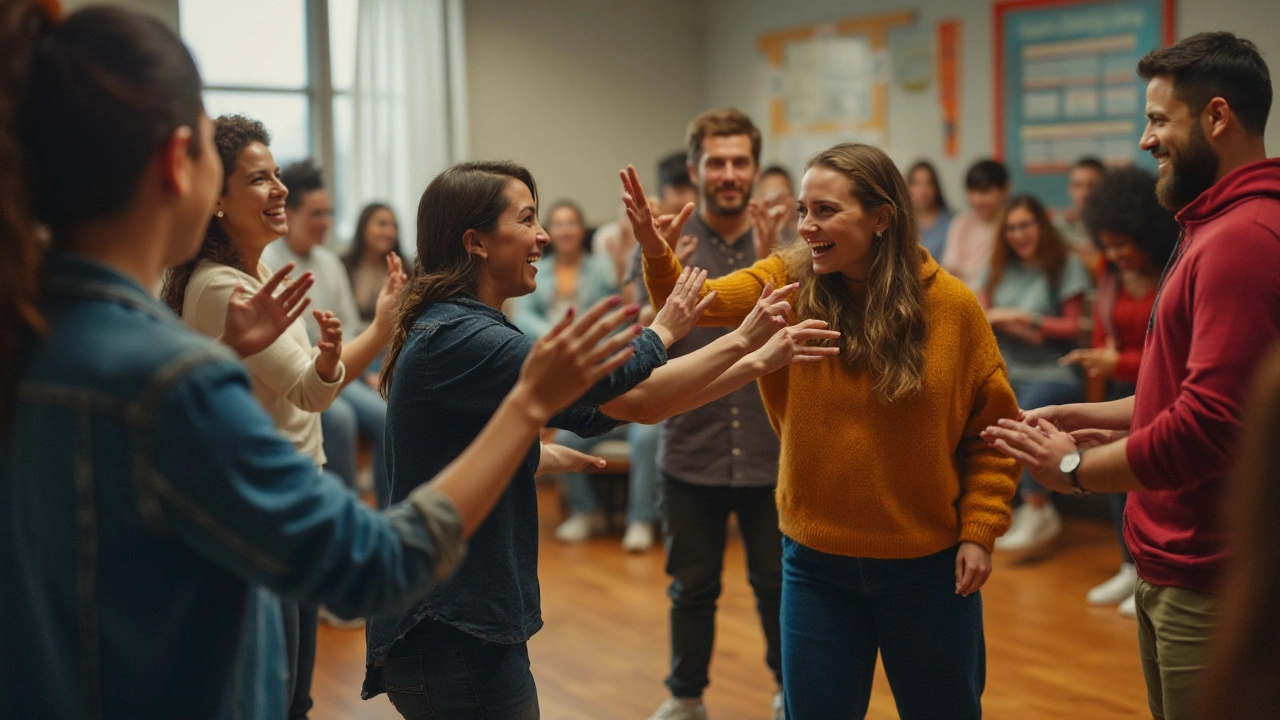
Future Prospects in Creative Arts Therapies
As the landscape of mental health treatment continues to evolve, the future holds promising avenues for creative arts therapies. This dynamic field thrives on innovation, constantly adapting to the unique needs of individuals and communities. The integration of technology in therapy, for instance, is creating fascinating opportunities for both practitioners and patients. Virtual reality and digital platforms are beginning to complement traditional art forms, offering immersive experiences that can help people engage with their emotions in new and profound ways.
Research into the benefits of creative arts therapies is expanding, with studies documenting the positive effects these therapies have on mental well-being. It is not just about reducing symptoms of mental health disorders; it's also about enhancing quality of life. More and more, healthcare institutions are recognizing the importance of holistic approaches, including the incorporation of the arts into treatment plans for various conditions. As awareness grows, funding opportunities are likely to increase, allowing further exploration into how these therapies can be tailored for specific patient demographics and settings.
"Creative Arts Therapies offer powerful tools for healing. By 2030, we anticipate significant advances in how these therapies are utilized globally," says Dr. Alex Monroe, a leading expert in therapeutic arts research.
The educational sphere is also keeping pace with this growth. Universities and training programs are increasingly focused on preparing future therapists with diverse skills, incorporating both traditional artistic techniques and cutting-edge therapeutic modalities. As a result, new generations of therapists are emerging, equipped with innovative methods to treat a variety of mental health challenges.
There are challenges, of course. Ensuring that creative arts therapies remain accessible to all communities is paramount. Advocates are pushing for more inclusive programs that consider cultural, economic, and social factors, aiming to make these therapies available beyond typical clinical settings. Collaborations with community centers, schools, and elder care facilities are key to reaching underserved populations.
The conversation around mental health is no longer confined to clinics and hospitals. With celebrities and influencers speaking openly about their mental health journeys, creative arts therapies are being highlighted as a viable, approachable option. As social media continues to shape public opinion, there's a groundswell of support for arts-based interventions that speak to people on a personal level. The future, indeed, looks bright for these transformative practices.

